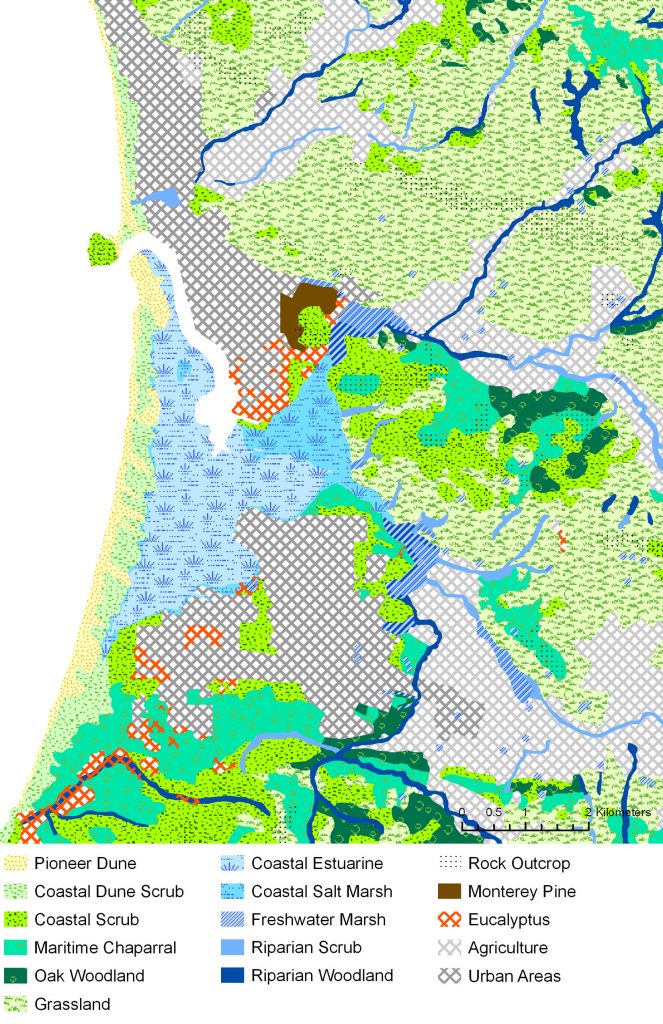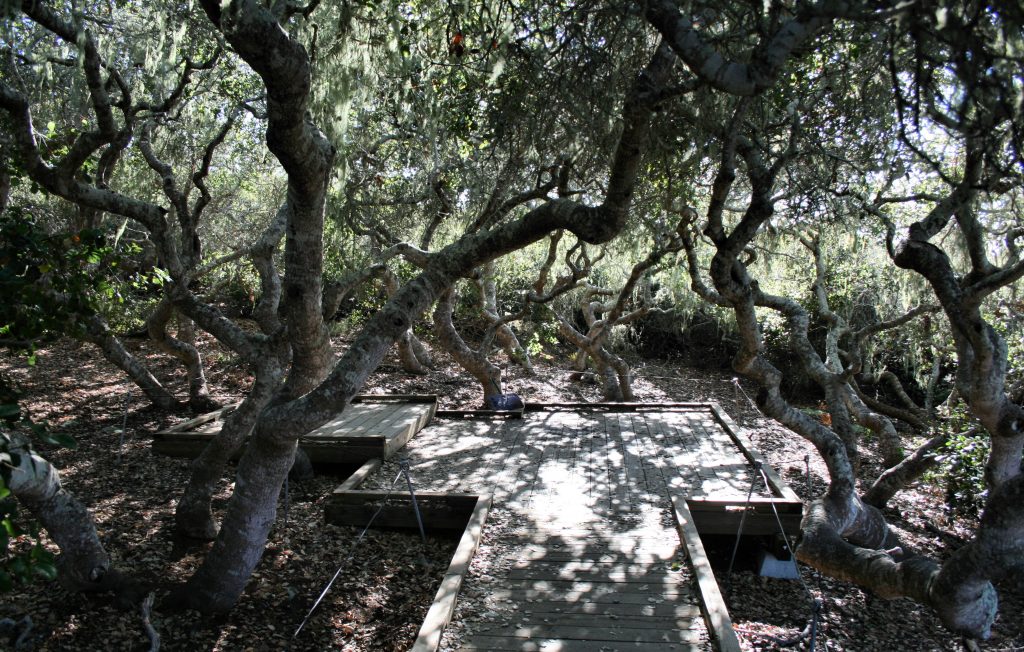Why do native plants thrive in the lands surrounding Morro Bay?
The Morro Bay watershed is one of the most botanically diverse regions in California. This diversity can be traced back to the ice ages as California’s coastline receded and advanced over thousands of years, and the tectonic plates settled into their current position. Many communities and species of plants have evolved here as a result of such active geologic change. These plant communities have continued to exist and thrive because San Luis Obispo County still resembles its natural state, despite increasing human habitation and land use development.

Because the natural areas of the Morro Bay watershed have been so well preserved, many native and rare plants grow here. Some of these plants are endemic to this area, which means that they are not found anywhere else in the world. To celebrate our area’s botanical richness, we are rereleasing our popular blog series on Morro Bay watershed native plants. For each blog post, we will explore a different plant community that you can find in the watershed, with suggested hikes, too!

What is a plant community?
A plant community is a grouping of certain species of plants, distinct from adjacent groups of plants, that interact with each other and their environment. We can tell these communities apart by their varying physical structure and appearance (that’s physiognomy in science circles). The plant communities’ appearance is created by the species of plants present, their distribution, size, and abundance. Communities are dominated by one or a few species that have the most impact on the environment and/or are the most abundant. Sometimes, plant communities are named after the dominant species; for example, the “oak woodland” community is named after the oaks that dominate it.

Over this series of posts, we will explore coastal sand dune, coastal scrub, subtidal and intertidal, marine aquatic, freshwater wetland, maritime chaparral, oak woodlands, riparian, grasslands, and anthropogenic communities, all located in the Morro Bay watershed.

Why do native plants matter?
There are plenty of species growing in Morro Bay that make this a very special place. Native plants matter because they provide habitat for native wildlife, and they support water conservation. Some insects and birds depend on very specific species of plants for survival, so a diverse range of native plants allows for a diverse range of native wildlife to exist.
Since native plants have been adapting to local environmental conditions over long periods of time, they require far less water to survive and they do not need fertilizer to support growth. In our dry Mediterranean climate here in Morro Bay, we encourage homeowners to plant native species in their yards for this reason. As stewards of the watershed, the Estuary Program pays close attention to our native plant communities – what is growing here, what might have grown here before human development, and how we can work to restore our native ecosystems.
A native plant primer
Getting to know the plants that are growing around you and why they are growing there is a great way to understand your environment and its ecological context (the complex interactions between flora and fauna that have been evolving over long periods of time). Just like familiarizing yourself with the local coffee shop and grocery store, it’s important to get to know your native plants!
Stay tuned for our first plant community post where we’ll learn about the pioneer sand dunes that make up the Morro Bay sandspit and the unique plants that can be found there during different seasons. We will release a new post in this series on the third Friday of the month.
Native plant resources
If you’d like to get a head start on learning about native plants, you might want to join the California Native Plant Society, visit the San Luis Obispo Botanical Garden, or visit Cal Flora, a digital database of wild California plants.
Subscribe to our weekly blog to have posts like this delivered to your inbox each week.
Help us protect and restore the Morro Bay estuary!
- Donate to the Estuary Program today and support our work in the field, the lab, and beyond.
The Estuary Program is a 501(c)3 nonprofit. We depend on funding from grants and generous donors to continue our work. - Support us by purchasing estuary-themed gear from ESTERO. This locally owned and operated company donates 20% of proceeds from its Estuary clothing line and 100% of Estuary decal proceeds to the Estuary Program. Thank you, ESTERO!
- Purchase items from the the Estuary Program’s store on Zazzle. Zazzle prints and ships your items, and the Estuary Program receives 10% of the proceeds. Choose from mugs, hats, t-shirts, and even fanny packs (they’re back!) with our fun Estuary Octopus design, our classic Estuary Program logo, or our Mutts for the Bay logo.